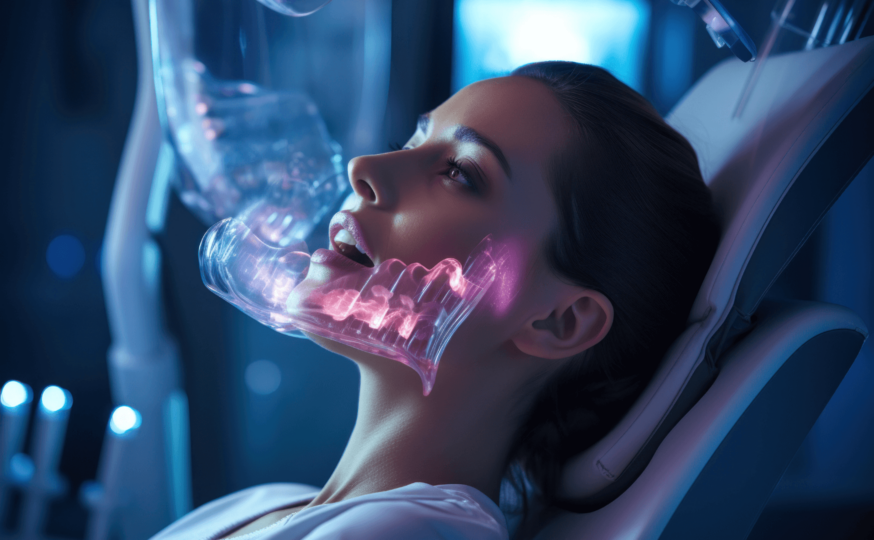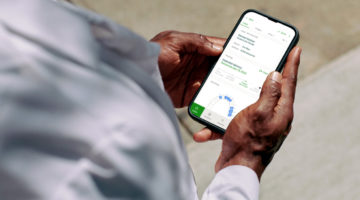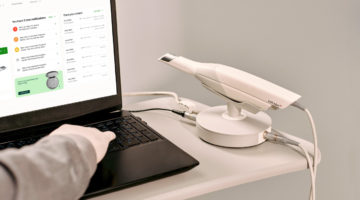Artificial intelligence (AI) is reshaping industries worldwide, including dentistry. Akin to modern dental technology, AI adoption has already begun elevating some patient care and streamlining operations. The following is a look at AI in dentistry and its innovative applications that are propelling modern dental practices into the future.
How do we define AI in dentistry?
AI is a term that is often used broadly. However, it’s important to understand that AI encompasses various technologies. For instance, science-fiction writers and movies influence us to think of AI as machines with human-like intelligence and self-awareness (that go on to imprison humanity or, worse, destroy it). However, that scenario is (still) fictional. While such machines represent a “final stage” type of AI, this is not the AI used in dentistry. Instead, most AI in dentistry falls under Reactive Machines and Limited Memory. Forbes describes these two categories as:
- Reactive Machines: The oldest form of AI that imitates our ability to respond to stimuli. These machines do not use past experience to “learn,” but instead have automatic responses.
- Limited Memory: These machines have the automatic reaction to stimuli but with the additional ability to learn from past experiences to influence future decisions. These systems need large amounts of historical data to increase their accuracy and usability.
How is AI used in dentistry?
Dentistry AI and technology systems can provide numerous benefits, such as improved diagnosis accuracy and increased administrative task efficiency. We hope that by presenting AI dentistry options, we give you an idea of what is possible, and then you can decide whether to pursue AI technology in your dental practice.
That said, some dentistry AI applications already being used in today’s dental practices include the following:
- Imaging and diagnosis
- Treatment planning
- Robotics and automation
- Augmented and virtual reality
- Data analysis and predictive analytics
- Administrative support
Let’s take a closer look at each area and how it can help clinicians deliver patient care.
AI in radiograph and intraoral scan analysis
AI-powered imaging systems are transforming the way clinicians diagnose dental conditions. These advanced systems use machine learning algorithms to analyze radiographs, intraoral scans, and 3D images with incredible accuracy and speed. These AI systems can automatically detect issues like cavities, fractures, and tumors, allowing dentists to make more precise diagnoses and intervene earlier on developing conditions, ultimately improving patient outcomes.
It is important to mention that AI systems do not diagnose oral health conditions. Rather, the AI indicates that an area of anomaly on the imaging might need further scrutiny by the dentist. Some clinicians describe it as having an impartial second opinion in the operatory with you and an eagle-eyed assistant who ensures you don’t miss anything.
Also, AI can help dental professionals master their scanning techniques. Using AI, the scanning software for many systems can guide the dental professional’s scanning showing which areas were missed or need to be rescanned. AI systems for dental scanners can also aid clinicians with taking a proper digital impression, eliminating unnecessary frames to optimize the final scan, detecting margins automatically, and developing a restoration design that restores the anatomy of the natural tooth.
Treatment planning with AI
In addition to enhancing diagnostic capabilities, AI-powered imaging systems enable the creation of detailed 3D models of patients’ teeth and jaws. These models can be incredibly useful for planning complex restorative procedures before treatment begins. Furthermore, the automated measurement and recording of tooth dimensions streamline record-keeping and facilitate easy sharing of digital records with other healthcare professionals.
Robotics and automation
The future of robotics and automation in Dentistry AI is to program repetitive dental tasks, like tooth preparation, implant placements, and orthodontic adjustments. However, some companies have already been exploring using robotics in the operator.
For example, Neocis has the FDA-cleared robotic surgery platform Yomi, which helps clinicians with dental implant planning and placement. Yomi allows dentists to plan everything prior to placement using a digital image and a CT scan. Then, clinicians can “drag and drop” the implant where they want it. During placement, the robot keeps the dentist on track, correcting their placement with haptics and visuals on the screen that ensure they stick with the correct angle, depth, and position from the plan. In many ways, Yomi helps dentists with implant placement like lane-assist features do when you are driving a car.
Is AI going to replace dentists?
No. Forget the mechanics of dental procedures, AI can not provide the empathy or clinical judgment needed for the treatment of human care (and if it ever becomes capable we have bigger issues). AI will not take jobs away from dentists, but dentists who utilize AI will take patients away from those who don’t eventually harness its efficiencies.
Augmented and virtual reality
Augmented Reality (AR) enhances patient experiences. AR overlays computer-generated images onto the user’s real-world perspective, creating a combined view. In dentistry, AR technology allows patients to see how they would look in different prosthetics, which AI algorithms help customize, ensuring that the final prosthesis aligns with the patient’s specifications.
Virtual Reality (VR) creates a computer-generated 3D simulation interacting with the real world. When combined with AI systems, VR becomes a potent tool for addressing dental concerns and managing pain that may not respond to traditional medications.
AR and VR have also revolutionized how students learn and practice in dental education. These technologies create realistic scenarios simulating clinical work on patients without the associated risks of live-patient interaction. Intelligent teaching systems, such as the Unified Medical Language System (UMLS) powered by AI, contribute to developing preclinical virtual patients. Through interactive interfaces, students can assess their work, compare it to the ideal standards, and engage in high-quality training settings. Recent studies indicate that students using AR and VR achieve competency-based skill levels faster than those relying on traditional simulator modules.
Data analysis and predictive treatment
AI algorithms process patient data, from medical records to oral health histories to treatment outcomes. AI can then identify patterns, which it uses to predict future oral health outcomes. Based on this information, dentists create personalized treatment plans and preventive care strategies for patients.
The future of predictive treatment has numerous dental applications. For example, AI algorithms could use patient data regarding diet, oral hygiene habits, and personal medical histories to predict the risk of tooth decay. Using smoking, medical, and genetic history, AI could also indicate the risk of gum disease or oral cancer. These algorithms could also look at patient bone density and medical and lifestyle data to foresee the risk of implant failures. Additionally, a 2022 study indicates that it can accurately predict the need for tooth extractions for orthodontic cases nearly 94% of the time.
AI for administrative support
AI virtual assistants can streamline administrative tasks in dental practices. From appointment scheduling to using Google Gemini or ChatGPT to draft patient communication to billing processes, AI reduces the workload on the front office team and increases practice efficiency.
For example, virtual assistants can offer patients convenient appointment times that optimize the schedule for the office as well. It can also inform dentists when a patient’s genetic history of lifestyle factors makes them at higher risk for an oral health condition, as well as any allergy information in the patient record or associated medical background to help with diagnosis and treatment planning. Virtual assistants can also process paperwork and insurance.
Should you harness the advantages of AI in dentistry?
If you told a dentist in the ’90s that in their lifetime they would witness every other dental practice use an intraoral digital scanner to make impressions, they would have laughed and asked if it would be delivered via hoverboard. Right now AI is helping dental professionals do their job by serving as an extra pair of eyes or brain in the operatory and front desk.
As AI’s capabilities grow in our industry—and become time-tested—we see an era in which every practice will utilize some function of AI. The question is: When will your practice be ready? Are you an early adopter or a wait-and-see-er?
Continue to check back with this article as we update it for current AI technology.



